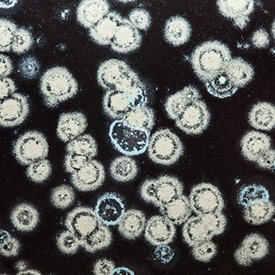Why is Mycotoxin Toxicity Information Important to NYC Co-Op Owners?

Inhaled Mold Spores Can Be Detrimental to Health
Everyone is familiar with the term “toxic mold,” but it doesn’t apply to every form of fungus found in a home or building. Here is some vital information about mold and toxicity that all NYC co-op owners should know.
What Makes Mold Toxic?
“Toxic mold” refers to species that excrete mycotoxins, which are metabolites produced in the presence of certain levels of temperature, water activity and pH balance. One of the more prevalent forms is aflatoxin, which is produced by Aspergillus, a commonly-occurring mold both indoors and outdoors.
Mycotoxins are found on mold spores as well as on the mold itself, causing them to spread to the surface where the infestation is growing. This prevalence can lead to mycotoxins entering a person’s system through inhaling, ingestion or skin exposure.
Mold also produces volatile organic compounds, or VOCs, that are responsible for the distinctive musty smell of fungi. While they are not technically mycotoxins, experiments have provided an increasing amount of evidence that VOCs can have toxic properties.
Mycotoxins and Your Health
Prolonged exposure to mycotoxins can result in physical and neurological problems. Studies suggest that these effects are the result of mycotoxins triggering the immune system and causing chronic inflammation. Up to 25 percent of the population is thought to have a genetic predisposition to the risks of mycotoxins.
Stern Mold: Your #1 Source for Effective NYC Mold Treatment
Any mold found in your co-op should be removed promptly, regardless of toxicity. Our two-part NYC mold treatment process safely eliminates mold and protects against recurrence.
Contact us today to make an appointment for a free mold inspection conducted by our friendly and professionally-trained technicians.
